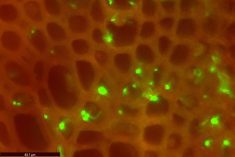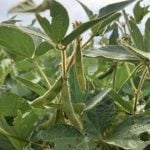Manitoba’s pulse and soybean sector has a new disease to worry about.
Charcoal rot, a soil-borne fungal disease known for causing yield loss in the U.S., has made its way into Manitoba’s soybeans and dry beans.
Why it matters: New soybean diseases are creeping into Manitoba as the province gains more history with the crop.
Read Also

Local Manitoba honey deserves more buzz
Manitoba’s beekeepers harvest local, high quality honey every year —Here are some tips and honey recipes that feature the sweet bounty
The disease, also known as dry-weather wilt, is caused by the fungus Macrophomina phaseolina. It’s among the diseases that thrive during hot, dry periods of summer, according to American extension materials.
“That’s why we probably haven’t seen this in the past,” said Yong Min Kim, a research scientist with Agriculture and Agri-Food Canada’s Brandon Research and Development Centre. “I think with climate change, and with higher temperatures and less precipitation, we may have to deal with a new disease in the coming years.”
According to a fact sheet published by Iowa State University, the pathogen usually infects soybeans early in the season, but can linger undetected until much later, when the crop hits its reproductive stages.
“Symptoms generally develop as a result of an external stress, such as drought or high temperatures, and are easy to confuse with several other diseases and disorders, including soybean cyst nematode injury, early senescence and drought stress,” the university noted.
AAFC first detected the disease in soybeans in 2020. That August, Kim and his team had randomly selected 63 soybean fields in south-central and southwestern Manitoba to be surveyed for root diseases. When lab results came back, they were positive for charcoal rot.
The next year, amid significant drought conditions, they found it in dry beans. Several samples from southeastern Manitoba were taken after showing physical symptoms of charcoal rot, and the diagnosis was confirmed through DNA sequencing and morphological analysis. AAFC published the findings from both surveys last year.
“This is the first report of this disease in Western Canada,” said Kim.
Since then, there has been a stream of soybean findings, the researcher said, but it hasn’t resurfaced in dry beans since that first discovery in 2021.
Signs of charcoal rot
Charcoal rot symptoms include wilting, leaf chlorosis and reduced plant vigour. The plant will eventually be killed by the infection.
According to the Soybean Research and Information Network, farmers can first expect to see brown streaks on plant roots. Later in the infection, leaves begin to yellow and the plant begins to drop foliage.
When infection is in full bloom, producers can scrape away outer lower stem and root tissue to check for black fungal bodies that give the disease its name.
In Manitoba, soybeans are the biggest crop of concern when it comes to the disease. Manitoba is the second-largest soybean producer in Canada, with almost 1.6 million acres of the crop planted last year.
In Ontario and Quebec, the other two major soybean-producing provinces in Canada, researchers have also discovered charcoal rot in soybeans and dry beans. It is common in the southern United States.
“It’s one of the top five soybean diseases in the U.S.,” said Kim. “And it’s also a big concern in the strawberry industry in California.”
The list of crop hosts also extends to corn and sorghum, and the pathogen is known to infect more than 500 different host plants.




















